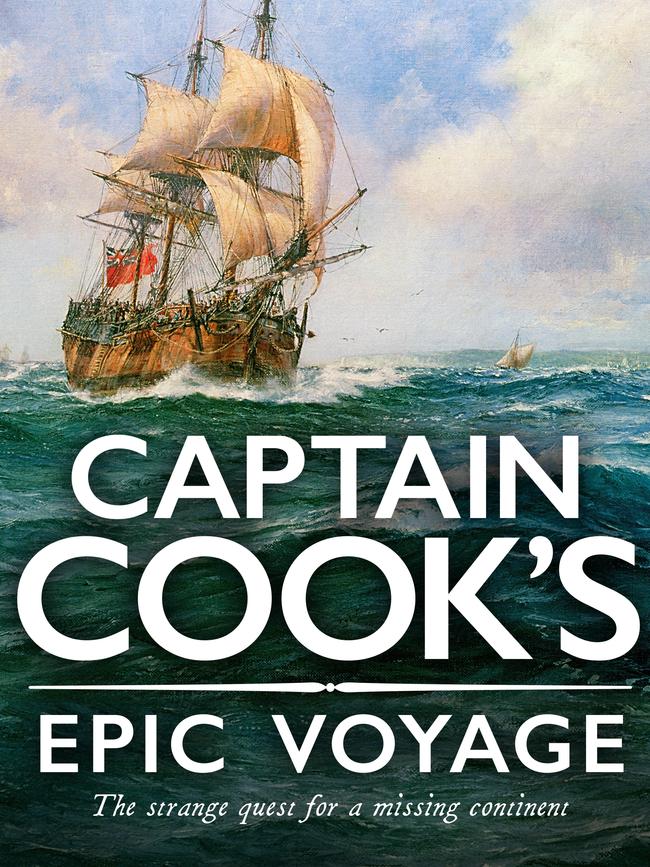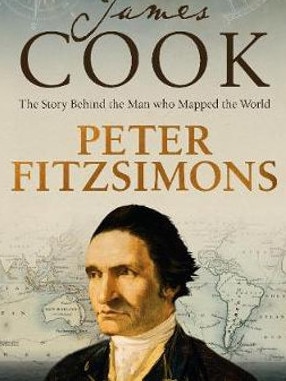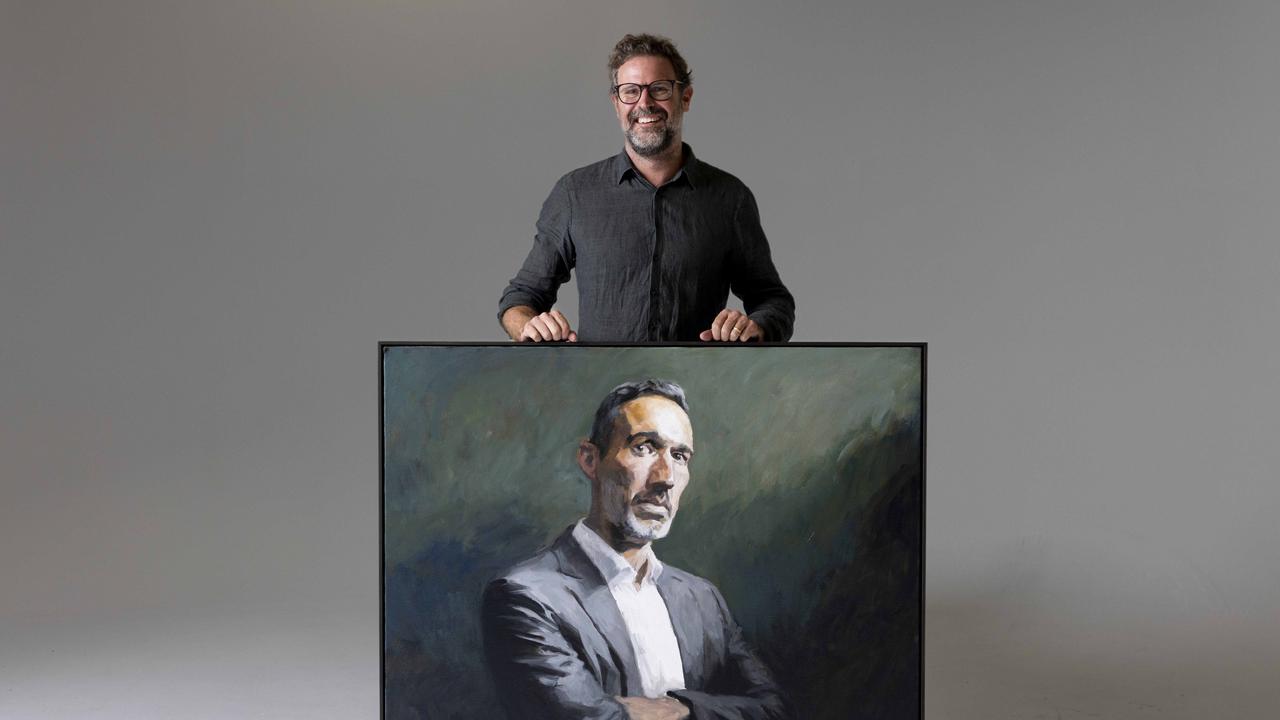Fresh visions of an epic life
Two new biographies on Captain James Cook strive to put his life into contemporary context.

Popular history in Australian publishing seems as buoyant as the amazingly robust wooden sailing ships used by European explorers to circumnavigate the globe. Apart from countless titles bringing to light lesser-known aspects of Australia’s past, it seems hardly a year goes by without a new book and/or film on Ned Kelly, John Monash or some other household name.
Certain events — Gallipoli springs to mind — likewise are recounted over and over again. Among the very earliest actors in the most familiar version of Australian history, James Cook and William Bligh seem to be the most frequently written about, whether in non-fiction or fiction or some combination thereof.
Two new books on Cook — one by an eminent historian and the other by a prominent media figure who credits the assistance of four researchers and three editors — add to a cluster of titles occasioned by the 250th anniversary of the first of the three Pacific voyages by Cook that included the places soon afterwards colonised by the British as New Zealand and Australia.
The semiquincentennial of Cook’s first voyage, which took nearly three years to complete, is also marked by a documentary series presented by the actor Sam Neill and, reportedly, a forthcoming opera by Tim Finn.
Notwithstanding the enthusiastic claim made in the subtitle of Peter FitzSimons’s book, Cook was not strictly speaking the man who mapped the world.
All of the European imperial powers were set on expansion at the time and sent ships out as far as they could go. The first European landing on the Australian continent in 1606 was led by Dutchman Willem Janszoon. The first Englishman, William Dampier, arrived in 1688.
There are still a few parts of the world yet to be fully mapped. No navigator in the great age of exploration by sailing ship ever had the time or resources to map the whole world, any more than the American astronauts who landed on the moon in the 1960s and 70s had the opportunity to traverse large sections of the lunar surface before the operational limitations of their vehicles and equipment required them to move on.

Geoffrey Blainey’s subtitle is also provocative, though in a different way. The phrase “missing continent” asks who was doing the missing. Not the people in Australia whose ancestors had been living there for tens of thousands of years, obviously, since Terra Australis Incognita was a European myth going back millennia.
As Cook was to confirm on his second major voyage, the only continent that really could be described as “missing” was the one that came to be called Antarctica.
Among all that Cook accomplished during his voyages of exploration, the charting of large areas of the Pacific Ocean was an astonishing feat of boldness, technical skill, survival and endurance, given the technology and medical knowledge of his time.
Blainey reminds us: “The ship in which he circled the world was not much larger in area than a tennis court.” Imagine being confined by yourself to such a space for just a week, much less long years spent sharing your confinement with nearly 100 other people and a few animals.
Readers of previous bestselling books by these two authors will be guided to the new one by their personal taste. I will read anything written by Blainey, not least because of the quality of his prose, the precision and economy of which I think distinguishes him as one of the finest non-fiction writers Australia has produced.
RELATED STORIES: Ellena Savage; a young life against the grain | The List: authors’ and critics’ best books of 2019
Regardless of the angle of approach taken and the quality they bring, any author tackling James Cook as a biographical subject is faced with two practical issues.
The first is that although Cook’s career as a navigator is extensively documented, as was required by the nature of his professional service in the Royal Navy, substantial access to the inner man was forestalled when shortly after her husband’s death his widow, Elizabeth, destroyed his personal papers and correspondence from a marriage that lasted half a century.
While we might lament the loss of a potentially immense trove of vital insights, we cannot presume to second-guess a woman who not only outlived her husband but had to endure the deaths of all her six children.
Whatever the impetus for the destruction of the papers, the net result was that the private mind of James Cook would forever remain opaque.
The second aspect of the Cook legacy with which any potential biographer must reckon is the fact that there is a definitive biography of Cook by New Zealand historian JC Beaglehole published posthumously in the 1970s that was the culmination of decades of research.
Add to Beaglehole’s biography his three-volume edition of Cook’s journals and you have the personal history of the man set out in the most detailed and comprehensive form ever likely to be made available.
Blainey and FitzSimons acknowledge the centrality of Beaglehole’s monumental feat of lifelong scholarship to any subsequent discussion of Cook. The work of Beaglehole, who died in 1971 at age 70, remains indispensable.
Yet today it is not possible to talk about a figure like Cook without considering the political and cultural questions that did not enter the purview of Beaglehole and his peers. At the time Beaglehole was alive, there were still indigenous people living in the desert who had never had contact with a non-Aboriginal person. For his part, Blainey aims to narrate the Endeavour voyage while also addressing the fact that in recent years …
Cook’s voyage has become controversial, especially in Australia where his discovery and its consequences are questioned by Aboriginal leaders and by many historians. In Sydney his statue was recently vandalised. The great navigator is branded an invader and destroyer.
Blainey respects Beaglehole’s scholarship while also drawing attention to the consanguinity between biographer and subject. “Like many biographers he became so close to his subject in spirit and sympathy that he became almost a disciple, and sometimes very reluctant to criticise him. In a few important places I disagree with Beaglehole, while continuing to admire his work.”

FitzSimons, meanwhile, dedicates his book to the memory of Beaglehole, “the historian to whom all those who tell the story of James Cook will be most indebted”. “This bloke,” FitzSimons continues, “was as thorough as any writer who ever lived, and I must make clear I am not so presumptuous as to claim to have found an answer that differs from Beaglehole’s. (Though I certainly differ from him in emphasis, and never more than in the scene of Cook’s landing at Botany Bay.)”
Added ingredients in FitzSimons’s book not present in the work of Beaglehole (nor Blainey, for that matter) include the use of the present tense and the interpolation of fictional events and dialogue. Striving for a kind of novelistic authorial omniscience, FitzSimons characterises his take on James Cook as “an attempt, if not to get inside his head, at least to get as far as possible inside his life and times that, as much as possible, the reader can be in the moment, not merely observing it from afar”.
Not unlike Blainey, FitzSimons brings a contemporary sensibility to Cook’s story. In the Australia of today, FitzSimons writes: The issues of sovereignty and British dealings with the First Peoples are particularly important as we try to come to terms with our history, and turn the page to a new and more equitable chapter. Where does Captain Cook fit into all that?”
As with every meaningful question about the relevance of the past to the present, there is no simple answer. Merely deprecating the past provides us with no way to make progress. What we can do, in a positive sense, is work towards an understanding of the Australian story that is all-encompassing and empathetic as well as alive to the full context in which things happened the way they did.
In its own way, each of these two books is trying to get us nearer in the national conversation to that place. Both authors are to be commended for that effort, without which the wider reading public may lose touch with the past altogether.
FitzSimons doesn’t address the contemporary significance of Cook upfront, and neither in his book does Blainey. Before they get to a judgment on the current position of James Cook in their concluding remarks, each of these authors has a story to tell of Cook’s life and adventures that, in and of itself, undeniably is quite a tale.
Simon Caterson is a writer and critic.
Captain Cook’s Epic Voyage: The Strange Quest for a Missing Continent
By Geoffrey Blainey. Viking, 336p, $34.99
James Cook: The Story Behind the Man Who Mapped the World
By Peter FitzSimons. Hachette, 494p, $49.99 (HB)



To join the conversation, please log in. Don't have an account? Register
Join the conversation, you are commenting as Logout